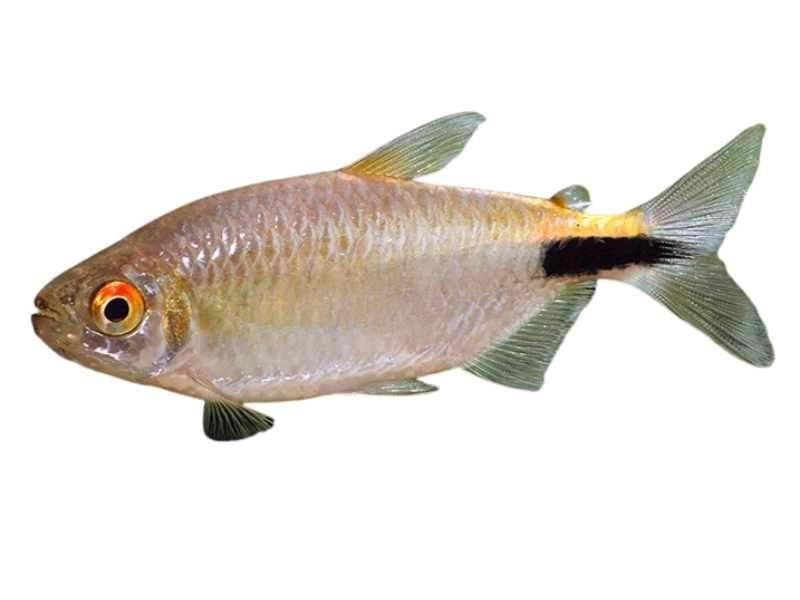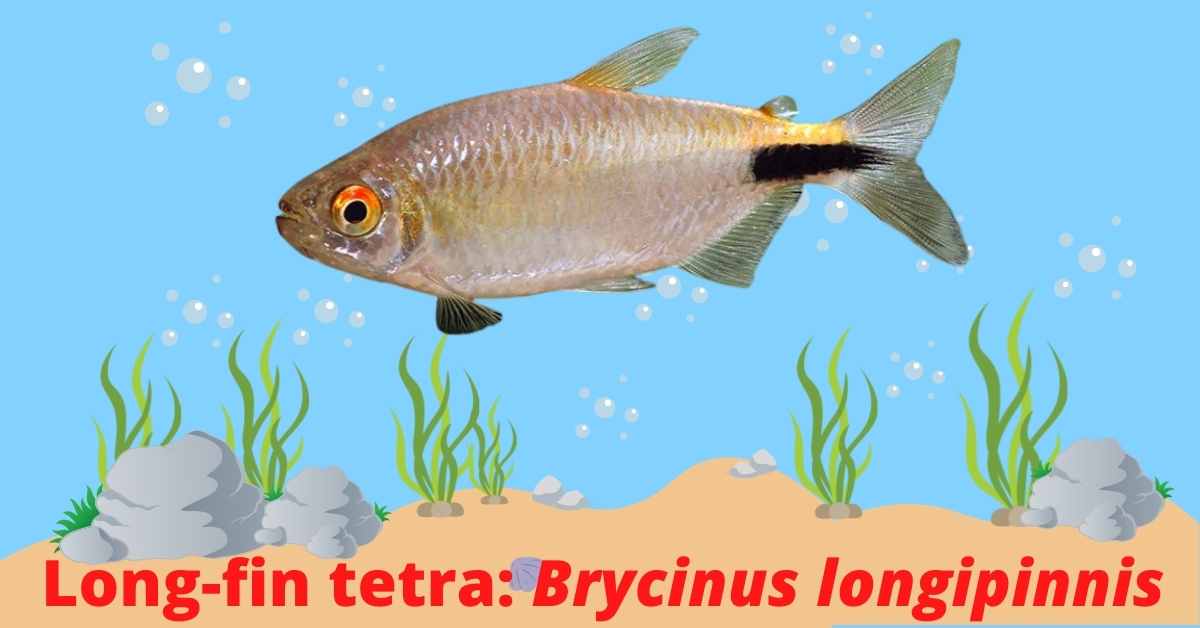The long-fin tetra-Brycinus longipinnis is a tropical fish that is found in the Amazon River basin and Orinoco River basins of South America and they inhabits the freshwaters. It is a popular aquarium fish due to its attractive appearance and peaceful nature and can be found in pet stores worldwide. This species can be found in sluggish streams, small rivers, and oxbow lakes with dense vegetation, where it can find shelter and food. The long-finned tetra typically occurs in schools near the bottom over sandy or muddy substrates.
You might also read: Niger tetra-Arnoldichthys spilopterus
Systematic Position
Phylum: Chordata
Subphylum: Vertebrata
Class: Actinopterygii
Order: Characiformes
Family: Alestidae
Genus: Brycinus
Species: Brycinus longipinnis
It has an elongated silver body with black markings running along its side and red fins. It has a long, red dorsal fin, and anal fins are also red, while the caudal fin is black with a white margin. Its elongated fins give its common name ‘long–fin tetra’. This fish grows to about six inches (15 cm) in length and can live for up to five years.

Longfin Tetra Quick Stats
Scientific Name: Brycinus longipinnis
Common Name: African long-finned Tetra, Long-finned Characin
Adult Size: 6 inches(15 cm)
Minimum tank size: 20 gallons
Tank level: Middle-top
Diet: Omnivore
Care level: Beginner – Intermediate
Breeding: Egg layers
pH: 6.5 – 7.5
Hardness: 5-19 dGH
Temperature: 72 – 79°F (22 – 26°C)
Lifespan: 5 years or more
They prefer to live in slow-moving, heavily vegetated waters. These fish eat both plant and animal matter which consist on insects, crustaceans, and other invertebrates that it finds while swimming near the surface of the water. In the aquarium condition, you may also provide them with a varied diet that includes both live and frozen food.
These fish are best kept in schools of six or more individuals, as they tend to become stressed when kept alone. They require well-oxygenated water with a pH of 6.5 – 7.5 and temperatures between 72 – 79°F (22 – 26°C). This species prefers to live in areas with plenty of cover from plants or rocks, where it can hide when threatened by predators. They like to swim near the surface of the water, so make sure there is plenty of open space in your tank for them to explore. This species of tetra does best when kept in schools of six or more individuals in an aquarium that is at least 20 gallons in size. They should be housed with other peaceful fish species that share similar water conditions.
Long-fin tetras are relatively easy to breed but does require some patience, making them a good choice for beginning fish keepers. The process begins by selecting a healthy pair of fish and conditioning them with live food such as brine shrimp or bloodworms. Once the female has begun to fill out with eggs, she will be placed into a separate tank with clean water and gentle aeration until it’s time to release the fry. The male will then be removed from the breeding tank so he doesn’t eat his offspring
They reproduce by laying eggs and the eggs are deposited on plants or other objects in the aquarium near the water surface, and the fry will become free-swimming within a few days. It is important to provide plenty of hiding places for the fry, as they are vulnerable to predation by larger fish. Both parents help care for these eggs until they hatch into fry.
Fry should start hatching within 24 hours after being released into the breeding tank and will become free swimming within three days. At this point they can be fed newly hatched brine shrimp or other small live foods until they are large enough to eat flake food.
This species is popular among aquarists for its bright colors and graceful swimming style. Male long-fin tetras are particularly striking, with their deep blue bodies and brightly colored fins.

